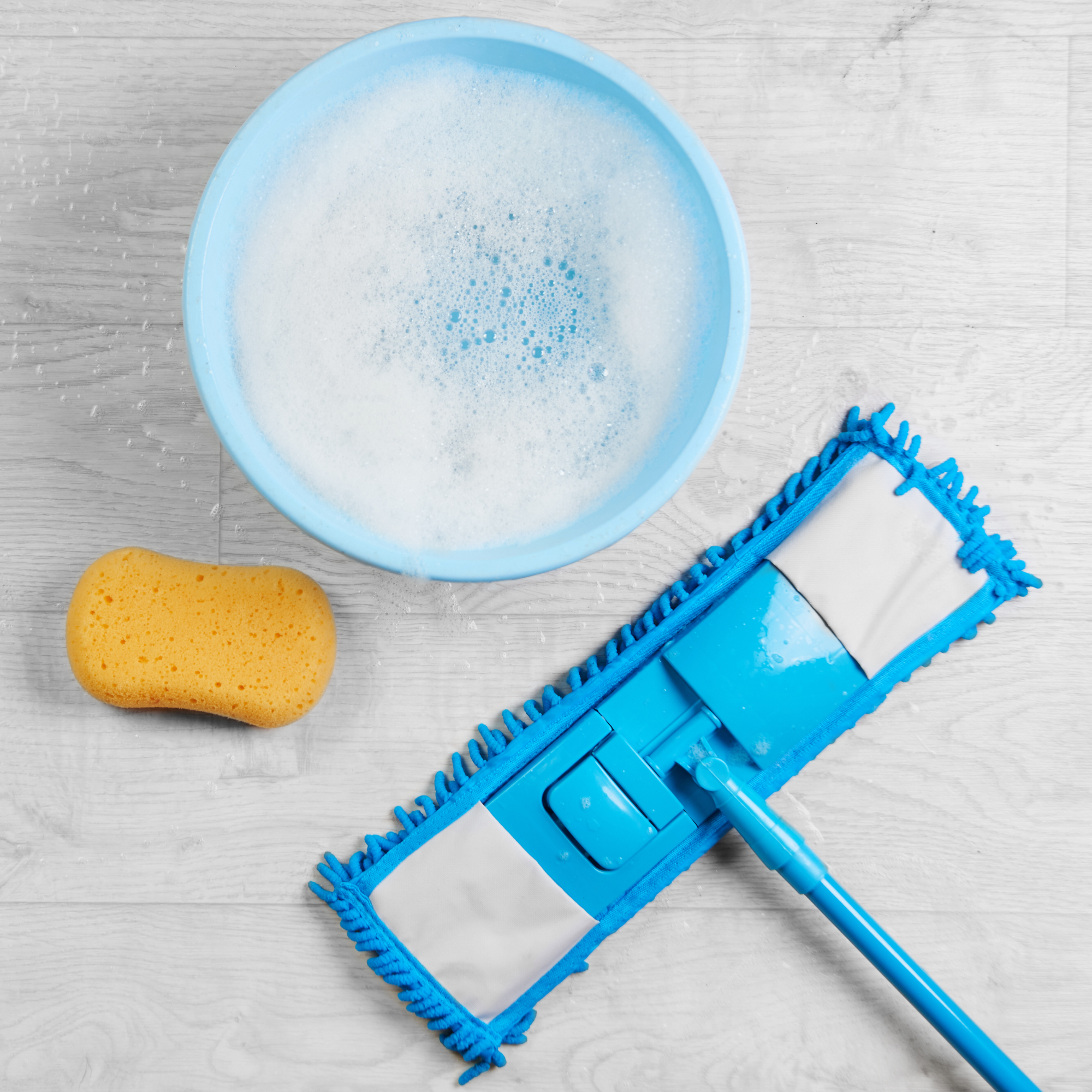Mopping vs wet vacuuming – cleaning experts reveal the pros, cons, and key differences between these popular methods
Experts weigh in on the best home cleaning method


Both mopping and wet vacuuming are similar in the way that they utilise water to help one achieve clean and spotless floors, but there are slight differences that still set them apart from one another.
That said, choosing between the best mop for cleaning or instead opting for the best wet-dry vacuum can be a difficult choice. Both methods boasts their own benefits and disadvantages, with each tool being better suited for certain floor types and circumstances.
So, to help you decide on your preferred method of cleaning, we asked experts to explain the differences and how to know whether mopping or wet vacuuming is the best fit for keeping the floors in your home in tip-top shape.

Mopping: pros and cons
'Mopping is the traditional method of cleaning floors using a mop and a bucket of water mixed with a cleaning solution and involves manually scrubbing the floor with the mop to remove dirt, grime, and spills,' begins Polya Petrova, cleaning and appliance professional at Fantastic Services.
While wet vacuums are a slightly newer addition to the market, mopping is a classic cleaning method that has long been around – and for good reason. Although mops have gotten more advanced, with steam mopping outgrowing regular mopping in some ways because of their effectiveness and convenience, traditional mopping with a good old mop and bucket is timeless.
'Mops and buckets are inexpensive compared to wet vacuuming machines, are simple to use, and require no electricity or advanced knowledge,' continues Polya. 'They can be used on various floor types, including tiles, hardwood, and laminate, and they are ideal for quick clean-ups and small spills.'

However, because of its simplicity, mopping can also become laborious – especially when cleaning appliances have gotten even more powerful and easier to use. Regular mopping requires physical effort and can be tiring, especially if you're trying to tackle large areas and can even leave water streaks or residue on the floor if they don't dry properly.
Sign up to our newsletter for style inspiration, real homes, project and garden advice and shopping know-how
Not to mention, it's even come to our attention that mopping can sometimes make floors dirtier, achieving the complete opposite effect. Henrique Conceicao, area manager at Total Clean explains that this is because it 'has the potential to spread germs if done incorrectly or with dirty water.'
Wet vacuuming: pros and cons
Wet vacuuming, on the other hand, uses a machine that vacuums up both liquid messes and dry dirt and debris. These wet-dry vacuums often come with features like rotating brushes, steam cleaning, and advanced filtration systems.
'Wet vacuuming with modern machines provides top-notch cleaning power by extracting dirt and excess water simultaneously. This approach works incredibly well for large areas or heavily soiled floors, cutting down on drying time while reducing the risk of bacterial growth,' explains Henrique.

'Wet vacuuming is more effective at removing deep-seated dirt, stains, and allergens,' adds Polya. If you require a deeper clean or are often dealing with liquid spills, then purchasing a wet vacuum is a worthwhile investment. Unlike mops, you can actually use wet dry vacuums on carpets and rugs for light and regular cleaning. This is ideal if your home is mainly carpeted and you're after a foolproof way to reliably clean carpet without damaging it.
However, where wet vacuums see a downfall is its higher initial investment compared to traditional mopping and not to mention, the need to maintain and upkeep the machine just as you would with regularly cleaning a vacuum to ensure it stays at optimal performance. 'It can also be noisy, which might be an issue in certain environments. It's also bulkier and requires more storage space than a mop and bucket,' says Polya.
Shop mops and wet vacuums

This Beldray spray mop is budget-friendly and more than easy to manoeuvre around your furniture, while it makes mopping underneath furniture easy, too. Equipped with 2 machine washable heads, this mop works fantastic on next to all types of flooring.

This mop and bucket set is packed with features to leave your floors sparkling clean, making it a bestseller for good reason. This bucket features an integrated spinner to semi-dry the head so you don't soak your floors and a spout for easy emptying that doubles as a handle.

This Kärcher wet and dry vacuum has a capacity of 20 litres and is solidly built in plastic with a stainless steel drum. We love it for its simplicity and sheer cleaning power. It's not too big or heavy for the workhorse it is and makes light work of dry and wet vacuuming.
FAQs
Is a wet vac better than a mop?
Wet vacuums are pretty circumstantial and how effective they are will depend entirely on your home and your cleaning needs. However, wet vacuums are generally more hygienic than just a regular mop because they reduce the spread of dirt and germs by collecting dirty water into a separate tank and helping with the task of deeper cleaning around large areas around the house – which is a perk that definitely comes in handy for big households filled with family and pets.
Can a wet vacuum replace mopping?
With all the benefits that a wet vacuum offers, including power, ease, and simultaneous cleaning of dry dirt and debris as well as liquid spills, it's possible that wet vacuums can replace mopping entirely. However, with their higher upfront costs and larger storage needs, it's not always the most accessible appliance to add to your cleaning roster.
As a result, we don't suspect traditional mops to go out style anytime soon seeing as they're still the more inexpensive and compact option. But, if you have the budget and space to spare, there's no denying that a wet vacuum would be an invaluable addition to your rotation of cleaning appliances.

Mopping vs wet vacuuming: which is right for you?
Now you understand the pros, cons, and key differences between mopping and wet vacuuming, you might be wondering which method is best suited for your home.
Before deciding on either cleaning method, it's important to consider the type of flooring in your home, the level of foot traffic, as well as any specific cleaning requirements around your home.
For example, Henrique explains that 'houses with hardwood or laminate flooring would benefit from wet vacuuming.' To add, he notes that 'timber floors require gentle mopping to preserve the finish, while sealed stone or tile floors need wet vacuuming to prevent grime build-up in grout lines.'
'Vacuuming is best suited for large areas and homes with heavy foot traffic, families with pets or young children where deep cleaning is frequently needed and homes with a preference for automated or machine-assisted cleaning,' explains Polya. On the other hand, mopping is adequate and extremely cost-effective if you're tackling a smaller flat or house and only require it for regular light cleaning.
Therefore, finding which better suits you is the first step to picking a side in the mopping vs wet vacuuming debate. But, rest assured that whichever you settle on adopting into your cleaning routine will make the world of a difference to the cleanliness and look of your flooring.

Jullia was Ideal Home’s Junior Writer from 2022-2024 and the Ideal Home Certified Expert in Training on Vacuums having spent over 60 hours testing different models. She’s always loved all things homes and interiors, graduating with a bachelor’s degree in Architectural Studies from the University of Nottingham where her love for writing blossomed following her internship at ArchDaily. Now focused on home tech and cleaning, Jullia works on writing features and explainers to help people make the most of their home appliance investments, putting the newest launches through their paces. When she isn’t writing, she loves exploring the city, coffee shop hopping, and losing hours to a cosy game or book.